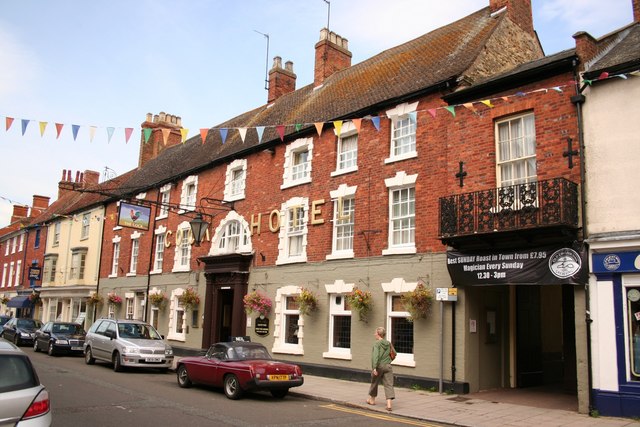Tag: regency
A Roman Road Through Britain
by admin on Aug.03, 2015, under Blog posts, Historical background
My newest regency romance, The Marriage Act, begins as a cross-country “road” story, with an unhappily married husband and wife forced to spend time in each other’s company as they travel through England. The road that the hero and heroine take out of London is a real thoroughfare, parts of which were already more than a thousand years old at the time of the Norman conquest. It’s called Watling Street, and it’s a Roman-engineered relic of the first century occupation of Britain.
Before the Romans arrived in Britain, the native Britons had already established paths that ran from the English Channel to a point where the Thames was narrow enough to ford, then later split into separate western and northern routes. When the Emperor Claudius sent his legions to conquer Britain in 43 AD, the Romans made use of these routes in their new province of Brittania. They built a lighthouse and later a fort at Portus Dubris (the port of Dover), then a paved road that ran northwest to cross the river Stour at the Roman town of Duruvernum Cantiacorum (present day Canterbury).
From there, the Roman road continued through present-day Rochester and on to Londinium (London). The Romans founded Londinium in 47 AD, building a bridge across the Thames and establishing a settlement on the north bank. That same winter, they paved the road that crossed the bridge.
What we now know as Watling Street ran in a westerly direction through Londinium and was nearly thirty feet wide in places. Leaving London, it turned to the northwest in a straight line corresponding to the present-day Edgware Road and continued through Verulamium (modern day St. Albans) and beyond. The Roman word for a paved road was strata, and many towns and villages along the route owe their names to the old road, including various forms of “Stratford” and “Stretton.” The name “Watling Street” comes from a tribe that lived in the region of St. Albans, the Wæcelinga.
Roman rule ended in Britain in the late fourth century, and subsequent centuries saw first Saxon and, later, Viking invasions. In 878, Alfred the Great defeated the Vikings, who withdrew into East Anglia, Essex and Eastern Mercia, rendering Watling Street the boundary between the Viking (Danelaw) and Saxon sections of Britain. The road went through various stages of disrepair and resurfacing over the centuries, but for the most part it remained well-traveled. Chaucer’s fictional pilgrims in The Canterbury Tales employ the London-to-Dover stretch of Watling Street in the late 1300s, and during the Great Fire of London in 1666, the diarist Samuel Pepys mentions how he “…walked along Watling Street as well as I could, every creature coming away loaden with goods to save – and here and there sick people carried away in beds.” Rebulding the church of St. Mary-Le-Bow after the fire, Sir Christopher Wren’s workmen discovered sections of the old Roman paving, and incorporated stones from the Roman road into the church foundation.

Watling Street rose to greater prominence in the coaching era, and the first turnpike trust in England was established in 1707 to re-pave parts of it. Inns along the route thrived. The southeastern section of the road, from London to the coast, became known as the Great Dover Road. To the west, civil engineer Thomas Telford improved communications between London and Dublin by extending the road all the way to the port of Holyhead in Wales, an undertaking completed in 1826. It’s this section of Watling Street–the Holyhead Road–that my characters travel in The Marriage Act.
Today, the Great Dover Road is known as the A2, and the Holyhead Road is roughly the A5, though the name “Watling Street” is still in use at many points. You can even find evidence of the Roman occupation, such as sections of the ancient city walls in St. Albans. Not only did Watling Street link the eastern edge of Great Britain, the coast of Kent, with the western edge in Wales, but we owe much of the London we know today to the old Roman road and the settlement that grew up around it.
I hope you’ll take a look at The Marriage Act, and that reading it gives you a feel for what traveling along Watling Street might have been like during the golden age of coaching in the early 1800s. If you enjoy “second chance at love” romances, you’ll find lots of drama in this story of a married couple bringing their relationship back from the brink of disaster.
New cover and release date
by admin on Mar.20, 2015, under Author news, Bookshelf
And I have an official release date for The Marriage Act. It should be available on July 27.
Audiobook & contest news
by admin on Nov.17, 2014, under Author news, Bookshelf, Contests and giveaways
Two quick pieces of news.
First, the audiobook version of An Heir of Uncertainty is now available on Audible.com, and should appear on Amazon.com in the next day or two. Just click the link if you’d like to hear a sample: An Heir of Uncertainty on Audible.com.
Second, the cutoff date to enter my Rogues, Spies and Scoundrels Night “like my page” contest was midnight on 11/15. I had 22 new likes, and Random.org chose new like #1. That means the winner of my $15 Amazon gift card giveaway is Samantha Minter. Samantha, FB message or Tweet me the email address where you’d like your prize sent. (My social media links are in the “Find me here” box on the right.)
I’m now available on Scribd
by admin on Oct.02, 2014, under Author news
If you’re a Scribd subscriber, three of my historical romance titles are now available from their digital library. Just click the link below to reach my Scribd page:
Contest winners
by admin on Sep.04, 2014, under Author news
Goodreads has determined the winners of my Ruined by Rumor giveaway. There were 881 entries and ten winners– eight in the United States, one in Canada, and one in the United Kingdom. Prizes went out in the mail on September 2, so if you were one of the lucky winners, watch your mailbox for your copy.
Narrator cast for next audiobook
by admin on Aug.06, 2014, under Author news, Bookshelf
I found out today that the narrator has been cast for An Heir of Uncertainty. She’s an actress named Rebecca Courtney, and she’s not only performed a wide variety of voiceover work, but also appeared on the stage and screen.
I’ll post a release date as soon as I have one.
Another regency on the way (eventually)
by admin on Aug.05, 2014, under Author news

Portrait of Count Sergey Uvarov, by Orest Kiprensky (1815). This portrait was painted in the year my next story opens.
Now comes the hard part–I have to finish the manuscript.
I’ll post more when I have information on the release date.
A fun update
by admin on Jul.21, 2014, under Author news

The Italian title of A Tryst With Trouble translates to “A Marquess in Charge” or “A Marquess Accused.”
I’ll be heading tomorrow to the Romance Writers of America conference in San Antonio, Texas. Before I go, though, I have a couple pieces of news.
First–and this is always fun for me–I just learned that A Tryst With Trouble now has an Italian translation: UN MARCHESE SOTTO ACCUSA (A Marquess in Charge). That’s the cover image to the left.
Second, I just learned this morning that the audiobook version of An Heir of Uncertainty has gone into production. I still don’t have a release date or know the identity of the narrator, but I’ll post more when I do.
Audiobook news
by admin on Jul.01, 2014, under Author news
I just learned this evening that Audible.com will be offering AN HEIR OF UNCERTAINTY as an audiobook. I’m always thrilled to hear one of my books professionally narrated, and I know many readers prefer the audiobook format. I’ll post an update when I have a release date.
Now in paperback!
by admin on Jun.17, 2014, under Author news
If you know any regency romance fans who love reading but have never made the switch to e-books, I hope you’ll consider recommending RUINED BY RUMOR to them, since Carina Press will be using the sales figures from this pilot program to determine whether they bring out more regency titles in print.
*Don’t miss Amazon’s animation that lets readers flip to the back cover of the book. Isn’t it cool?






